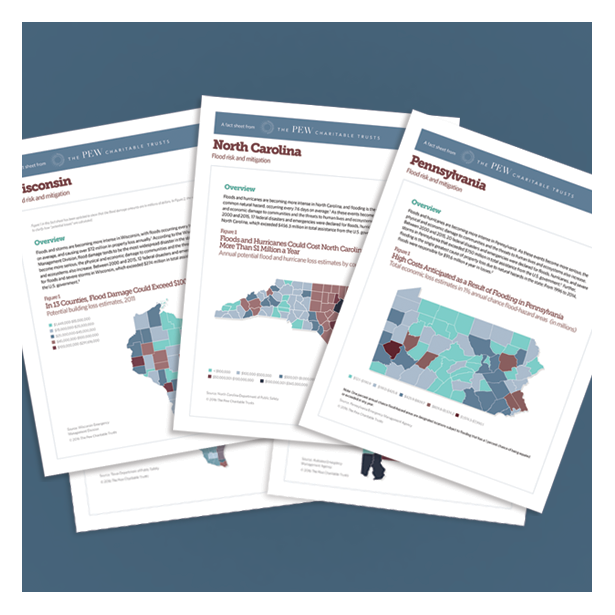Home Sellers Should Disclose Flood History and Risk to Buyers
By requiring disclosure during property sales, Congress would help Americans to make better-informed investments

Many homes, even those far from the water’s edge, face the threat of floods. Congress should require that people selling a home fully disclose the property’s flood history and risk to prospective buyers.
© Getty Images
This analysis has been updated to reflect 24 states were affected by federally declared natural disasters in 2016.
In 2016, flooding was a factor in 36 federally declared natural disasters that affected 24 geographically diverse states from Pennsylvania to Missouri, Texas to Wisconsin, and Kentucky to Washington. Looking ahead, experts anticipate that the likelihood of flooding in areas already deemed at high risk will increase 45 percent by the end of the century, threatening $66 billion to $160 billion worth of real estate.
The need for flood risk disclosure
To help home buyers make informed decisions, the U.S. government should require sellers to disclose available information about a property’s flood history and risk, along with obligations that the property owner carry flood insurance. As it stands, there is no national requirement for sellers to state that their home is located in a flood-risk area.
This lack of transparency can have devastating consequences for families and their property. Buyers need to have all the information necessary to make an informed decision, particularly on what is for many the largest and most important purchase of their lives.
Federal precedent for disclosure: Lead-based paint
The federal government requires that sellers disclose other health and safety risks, notably the presence of lead-based paint, and numerous states and localities—including California, Delaware, Houston, and Miami-Dade County, Florida—require flood history and risk disclosure. But a patchwork of inconsistent state and local policies is insufficient.
A single, national standard
A single, national standard requiring sellers to disclose a property’s flood history makes sense. After all, the government mandates flood insurance for properties with a federally backed mortgage located in high-risk areas called Special Flood Hazard Areas (SFHAs). And research reveals that consumers who bid on a property without knowing its flood zone status fail to properly account for the costs and risks associated with the purchase.
For example, one resident of Harker Heights, Texas, whose house flooded 20 times in the past 13 years, was not aware that the property had a history of flooding. And a family in West Ashley, South Carolina, saw its house flood three times in 2015, most recently during Hurricane Matthew. When purchasing the home, the family was not made aware of the frequent floods, information that would have enabled the buyer to account for mitigation and insurance costs before making an offer to purchase the house.
Congress is due to reauthorize the National Flood Insurance Program this year and should require that people selling property in the U.S. fully disclose the flood history and risk to prospective buyers.











